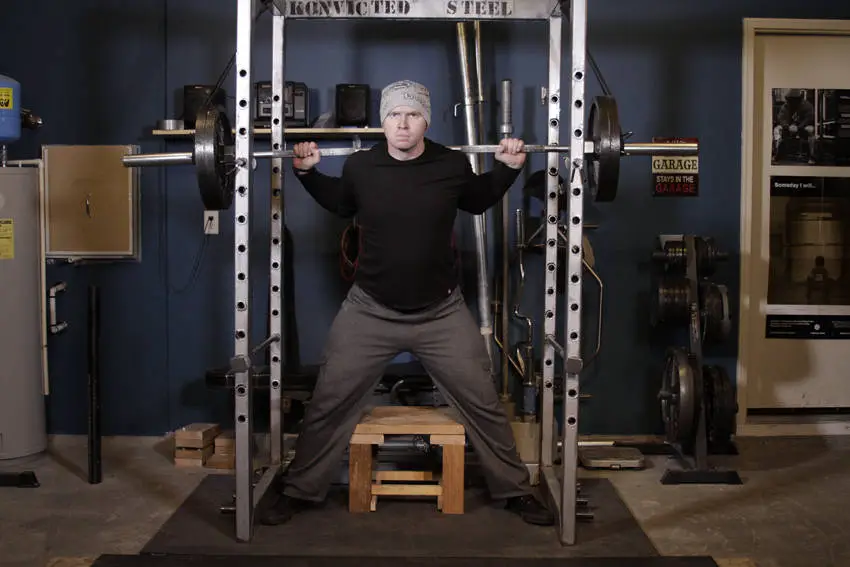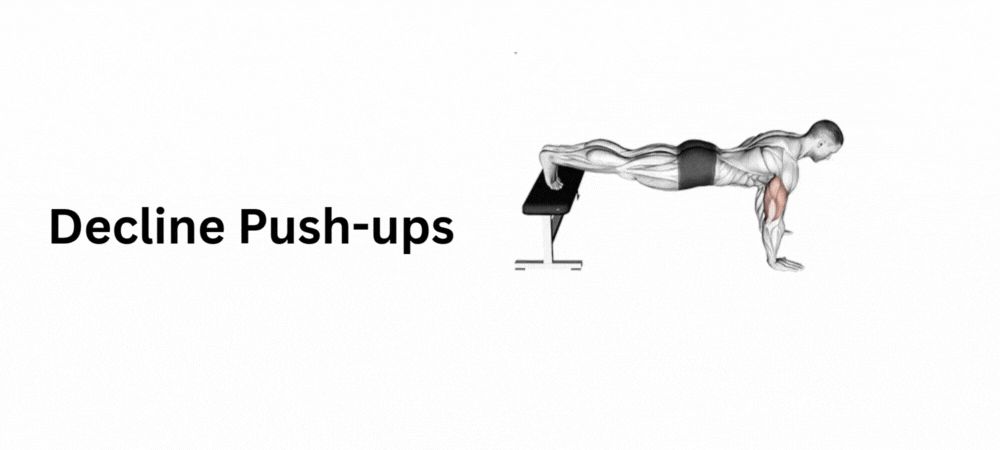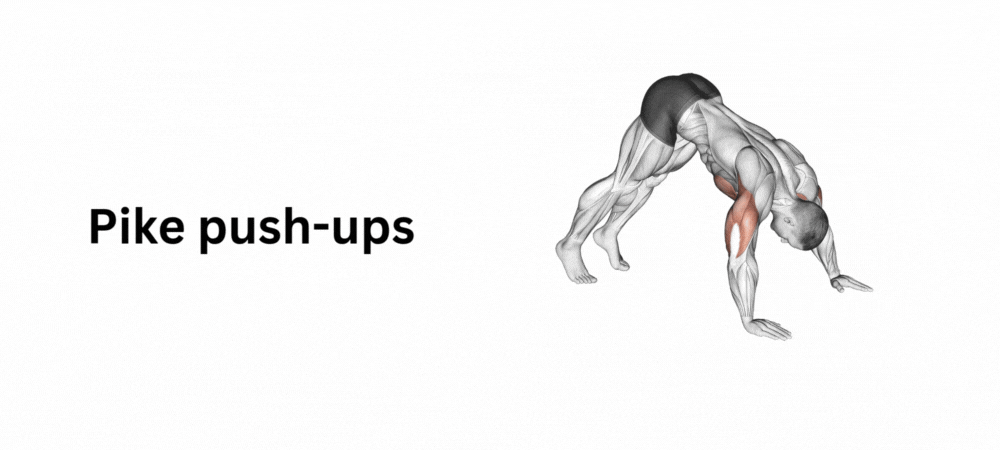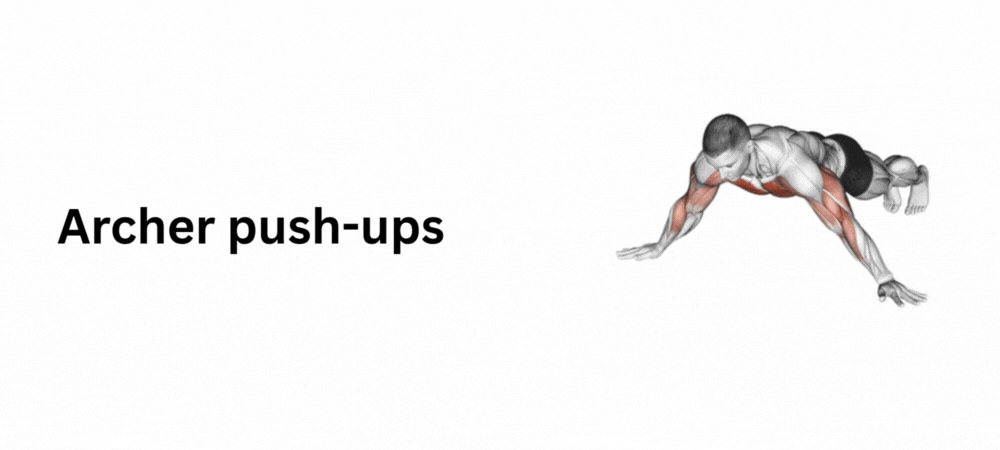The Reverse Band Box Squat is a variation of the traditional squat exercise that utilizes resistance bands attached to the squat rack to assist the lifter during the ascent phase of the squat. This exercise is valuable for powerlifters, strength athletes, and anyone looking to improve their squat performance and strength. In this comprehensive guide, we will delve into the technique, benefits, and alternatives to the Reverse Band Box Squat.
Instructions for Reverse Band Box Squat
Setup:
- Squat Rack and Bands: Start by setting up a squat rack with the desired bar height and placing the appropriate resistance bands on the hooks at the top of the rack.
- Bar Placement: Position the barbell at a height slightly below your regular squat depth when sitting on a box or bench. Make sure the bar is loaded with an appropriate weight.
- Box or Bench: Place a box or bench behind you. The height should allow you to achieve a parallel or slightly below parallel squat position when seated on it.
- Band Attachment: Attach the resistance bands to the barbell. The bands should be stretched vertically and secured to the ground beneath you.
Execution:
- Set Up: Approach the barbell, stand with your feet shoulder-width apart, and position yourself underneath the barbell. Your back should be tight, and the bar should rest comfortably on your upper back, just like in a regular squat.
- Box Position: Carefully step backward to clear the rack. Position yourself in front of the box or bench, ensuring your feet are in a stable stance.
- Descent: Initiate the squat by pushing your hips back and bending your knees. Lower your body under control until you make contact with the box or bench.
- Seated Position: When seated on the box or bench, maintain a brief pause to eliminate the stretch in the resistance bands and ensure that you are sitting in a stable position.
- Ascent: Drive through your heels and explosively stand up, pushing against the resistance bands. The bands will provide assistance as you ascend, helping you overcome the sticking point commonly encountered in regular squats.
- Lockout: Complete the squat by fully extending your hips and knees until you are in an upright position. Maintain proper form and control throughout the movement.
- Repeat: Perform the desired number of repetitions, ensuring that each rep includes a controlled descent, a brief pause on the box, and an explosive ascent.
Tips:
- Maintain a neutral spine and brace your core to support your lower back.
- Keep your knees in line with your toes and avoid excessive forward leaning.
- Choose appropriate resistance bands and barbell weight to match your strength level and training goals.
- Focus on controlled, explosive movements to maximize the benefits of the exercise.
Benefits
- Strength Development: The Reverse Band Box Squat is an excellent tool for building lower body strength, particularly in the quads, hamstrings, glutes, and lower back. The accommodating resistance provided by the bands challenges your muscles throughout the entire range of motion.
- Sticking Point Elimination: This exercise is especially useful for powerlifters and strength athletes as it helps to overcome the sticking point, which is the most challenging part of the squat movement. The bands assist during the ascent, allowing you to handle heavier weights and build confidence in lifting.
- Injury Prevention: The controlled descent and ascent, along with the brief pause on the box, promote proper squatting mechanics and reduce the risk of injury. This can be particularly beneficial for individuals with a history of lower back or knee issues.
- Variability: The Reverse Band Box Squat adds variety to your squat routine. By adjusting the height of the box or bench and the resistance of the bands, you can target different aspects of your squat and break through plateaus.
- Explosive Power: The exercise encourages explosiveness in the squatting motion, which is essential for athletes in sports like powerlifting, weightlifting, and track and field.
- Functional Strength: The Reverse Band Box Squat can translate to improved performance in activities that require explosive lower body strength, such as jumping, sprinting, and agility drills.

Alternatives
While the Reverse Band Box Squat is an effective exercise, there are alternative movements that can help you achieve similar benefits and add variety to your training routine:
- Regular Box Squat: This is a foundational squat variation that involves sitting back onto a box or bench at a predetermined depth before standing back up. It helps build strength, particularly in the posterior chain and hips, and reinforces proper squat mechanics.
- Pause Squat: In this variation, you perform a regular squat but add a brief pause at the bottom position, just above parallel. This helps build strength out of the hole, similar to the Reverse Band Box Squat.
- Banded Squat: Instead of using reverse bands, you can use regular resistance bands to add accommodating resistance to your squats. Attach the bands to the barbell and the floor, making the lift more challenging at the top of the movement.
- Safety Squat Bar Squat: This squat variation involves using a safety squat bar, which has a different weight distribution than a traditional barbell. It can be less taxing on the shoulders and upper back while still challenging the lower body.
- Front Squat: The front squat places the barbell across the front of your shoulders, challenging your core and upper back stability while still targeting the lower body muscles. It’s an excellent alternative for variety.
- Zercher Squat: In the Zercher squat, you cradle the barbell in the crooks of your elbows, which can be less taxing on the shoulders and upper back. It emphasizes the lower body while engaging the core and upper arms.
Incorporating these alternative exercises into your training program can provide a well-rounded approach to building strength and improving your squat performance. Depending on your goals and preferences, you can rotate through these exercises to keep your workouts fresh and challenging.
In conclusion, the Reverse Band Box Squat is a valuable addition to any strength training routine, offering benefits such as enhanced strength development, overcoming sticking points, injury prevention, variability, explosive power, and functional strength. However, it’s essential to perform this exercise with proper technique and under supervision, especially when using heavy resistance bands and weights. Additionally, including alternative squat variations can help you diversify your training and address specific aspects of your squatting performance.







